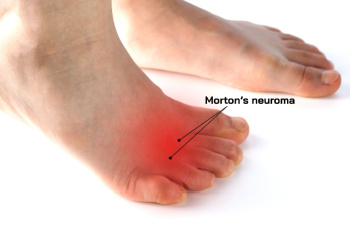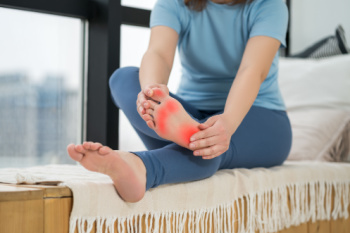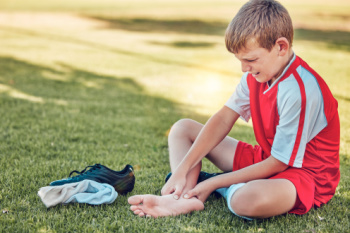Morton’s neuroma is a foot condition in which the nerve tissue between the third and fourth toes thickens. This thickening is typically the result of compression and irritation of the nerve. The nerve becomes larger and causes pain. Left untreated, this could lead to permanent nerve damage.
The symptoms of a Morton’s neuroma include pain and tingling, burning, or numbness in the affected foot. A Morton’s neuroma can produce a unique sensation similar to something being stuck in the ball of the foot or in your shoe. Morton’s neuroma symptoms often have a gradual onset. Initially, they may occur only while doing specific activities or while wearing shoes with a narrow toe area. However, over time the symptoms worsen and can last for several days or weeks. Without treatment, the symptoms can become increasingly severe and the nerve can become permanently damaged.
People who often wear high-heeled shoes or shoes with narrow toe boxes and those with certain foot deformities, such as bunions, hammertoes, and flat feet are at an increased risk of developing Morton’s neuroma. Involvement in activities that put repetitive stress on the ball of the foot, such as running or tennis, can also irritate the nerve and lead to Morton’s neuroma.
This condition is diagnosed through a physical examination. An imaging study, such as an ultrasound, may also be used to confirm the diagnosis and to rule out any other potential causes for your symptoms. Treatment for Morton’s neuroma varies depending on the severity of the neuroma. Padding the affected foot, wearing orthotics, or choosing wider and more comfortable shoes may be suggested to relieve pressure on the affected nerve. Icing the area and taking nonsteroidal anti-inflammatory medications can help relieve pain. In very severe cases, surgery may also be an option. To learn more about Morton’s neuroma, please consult with a chiropodist.






